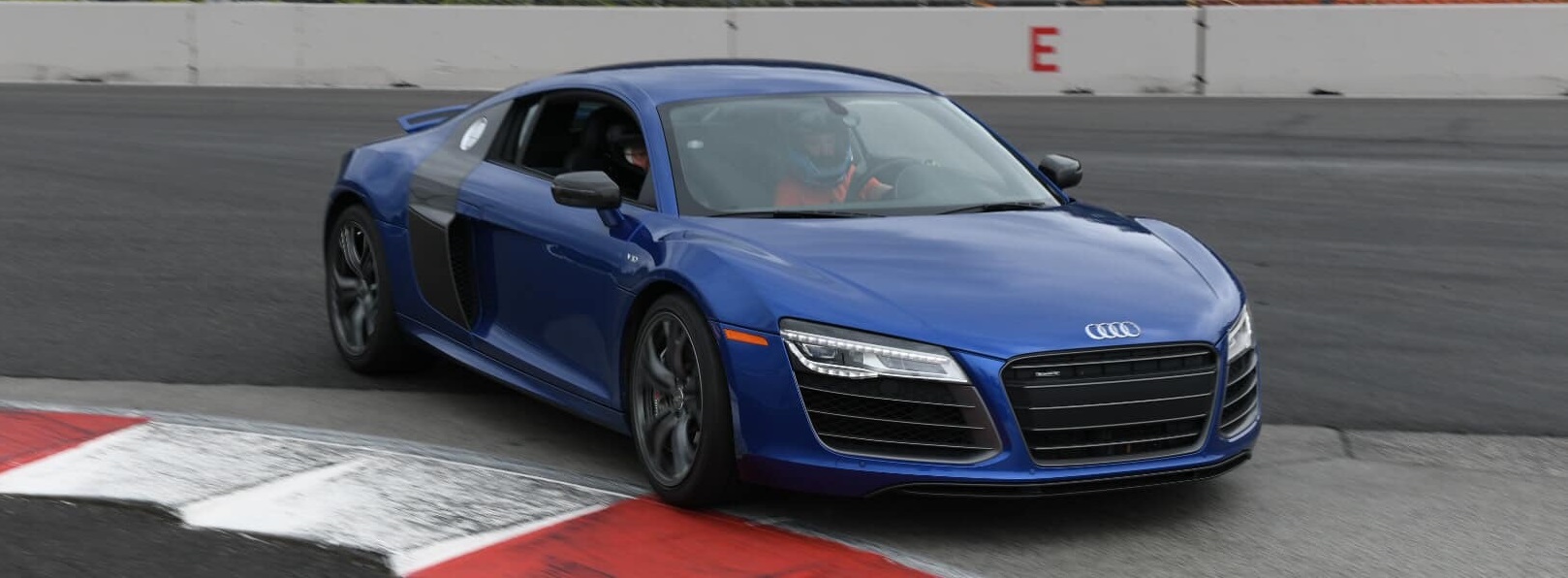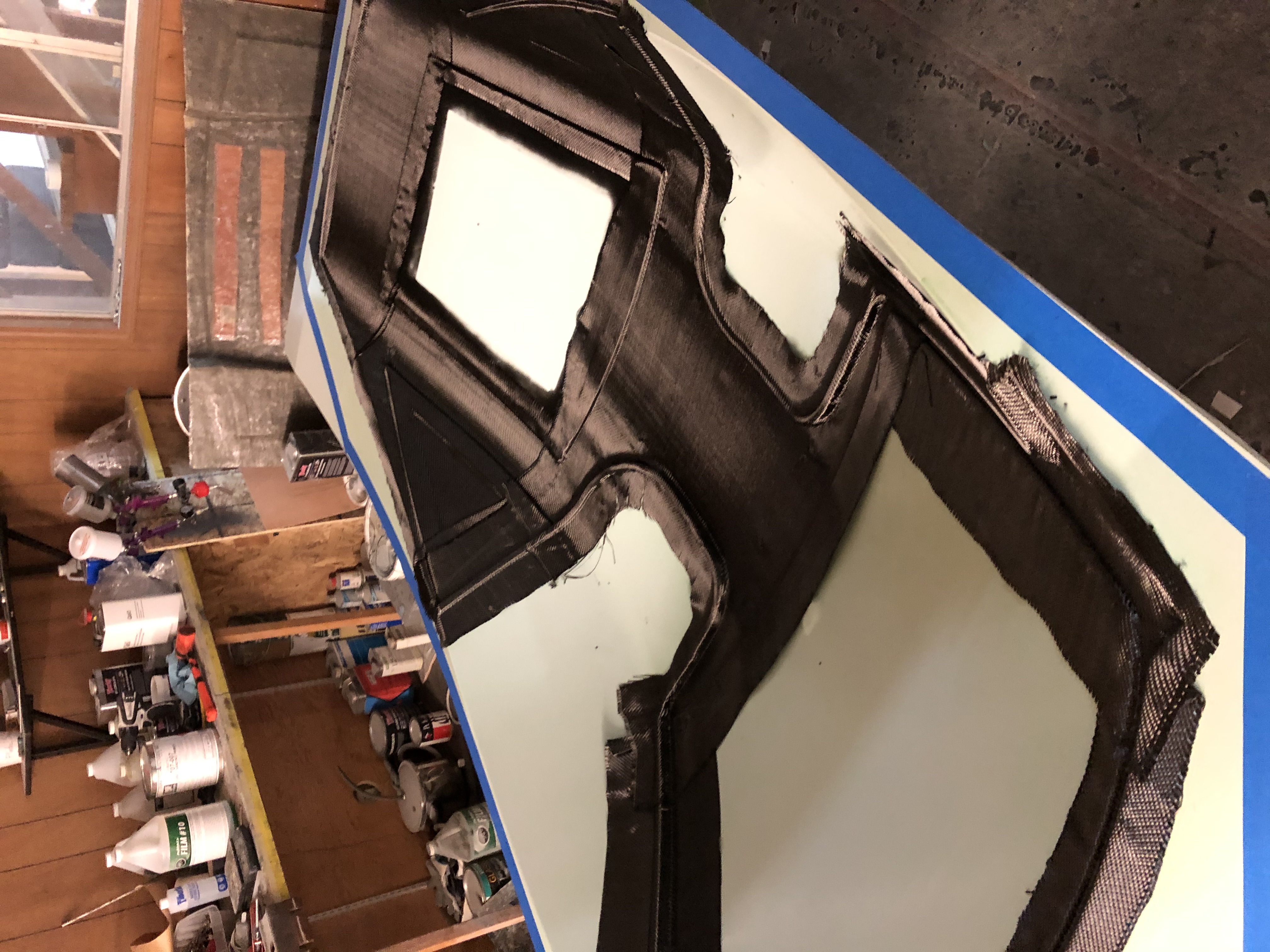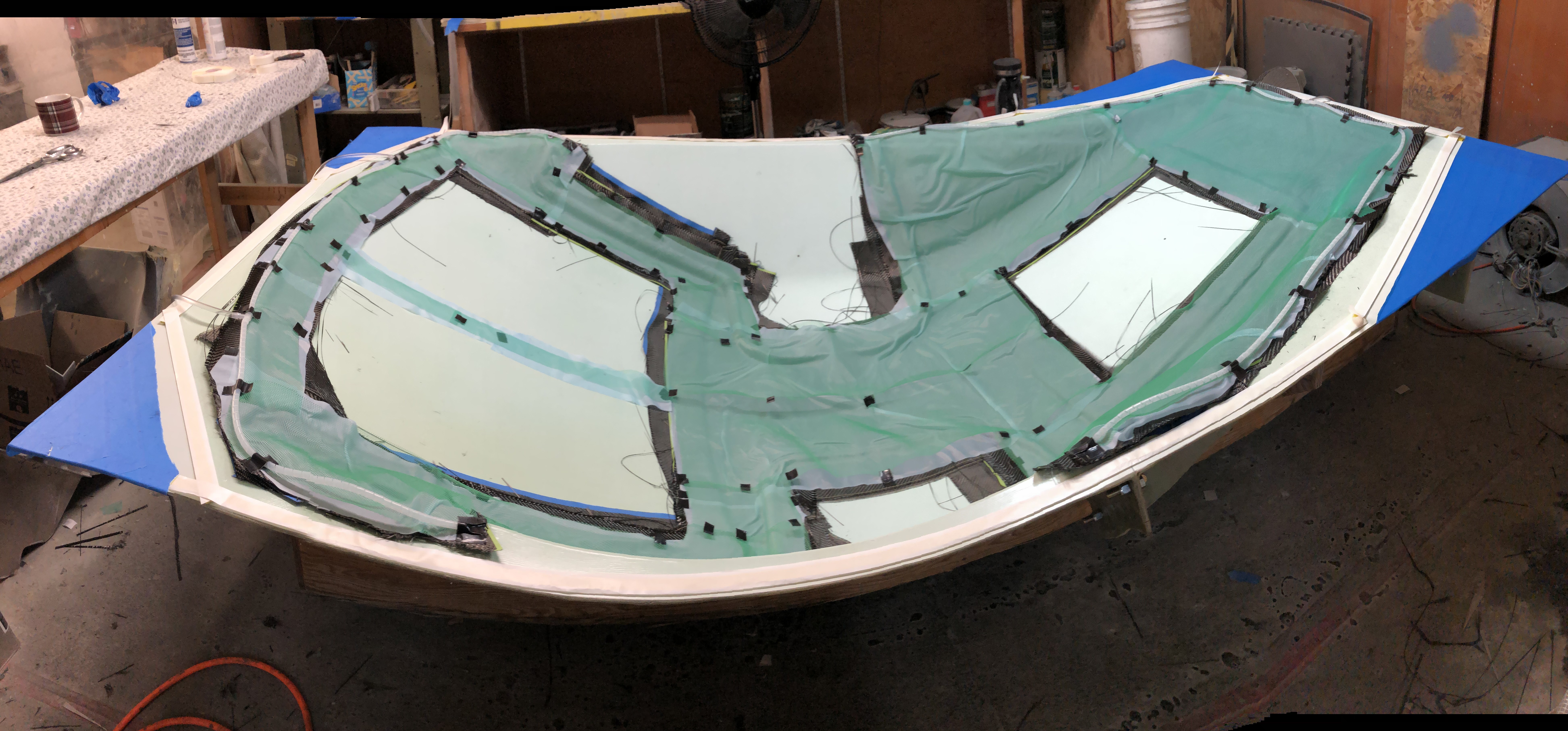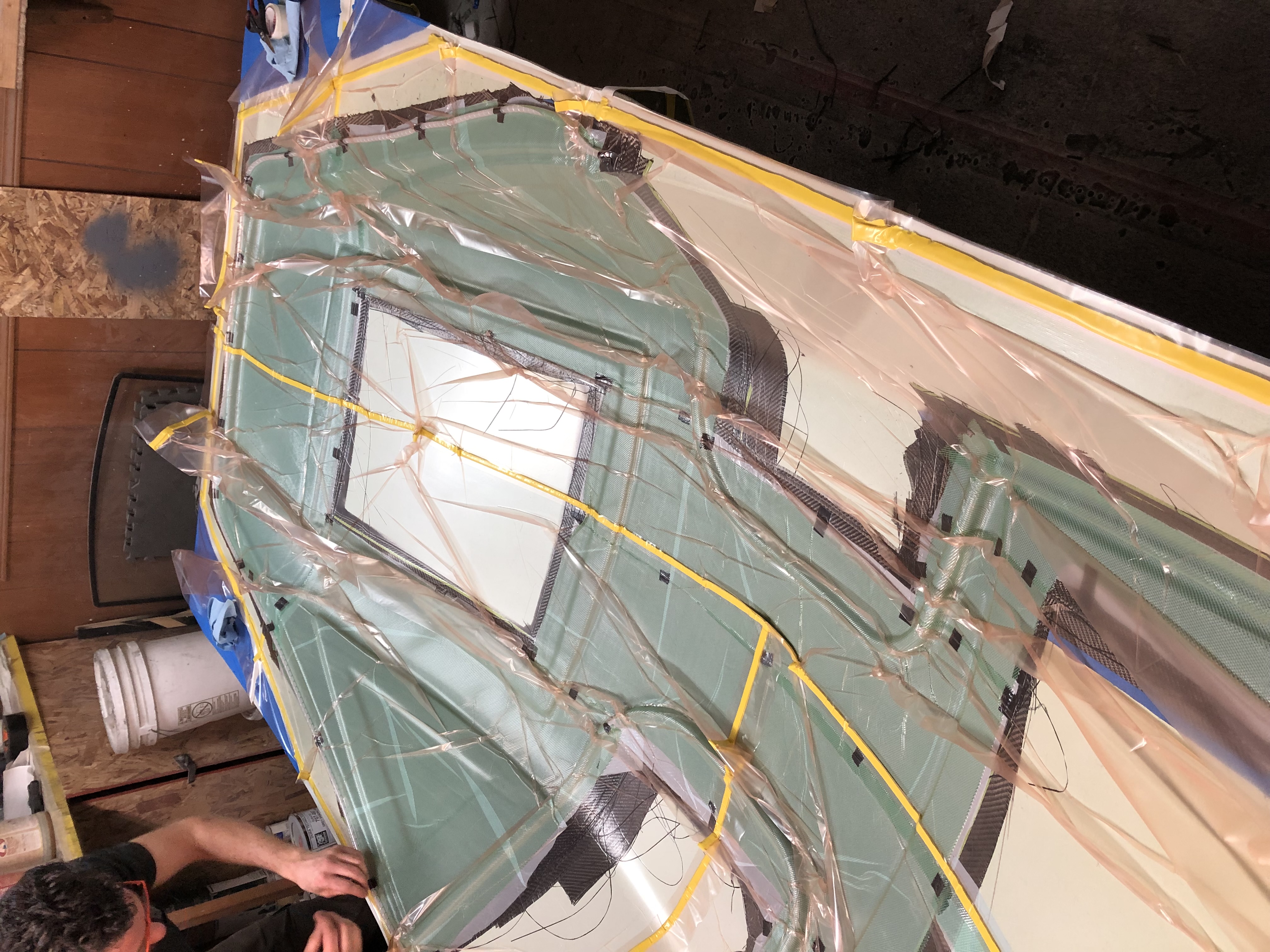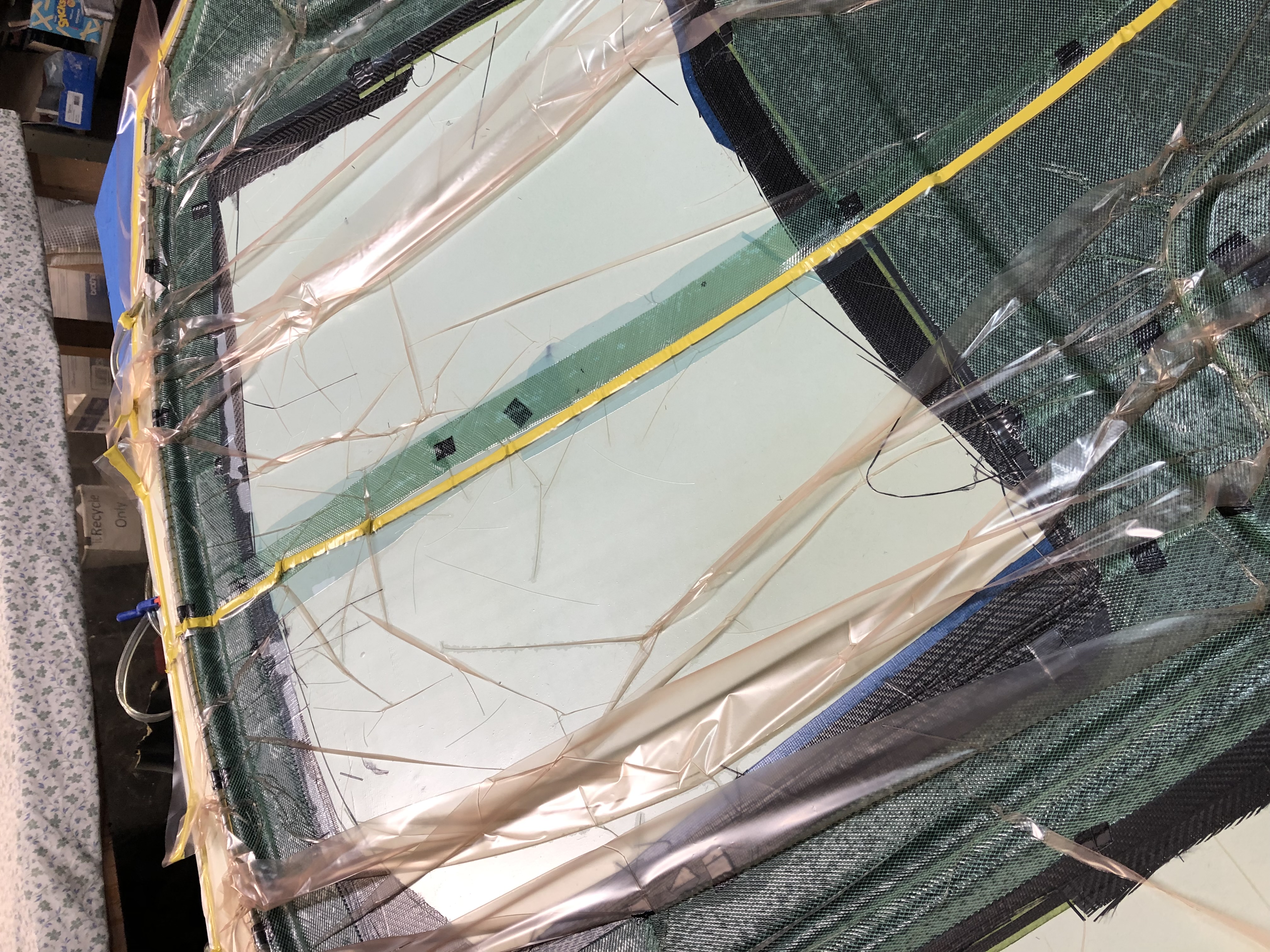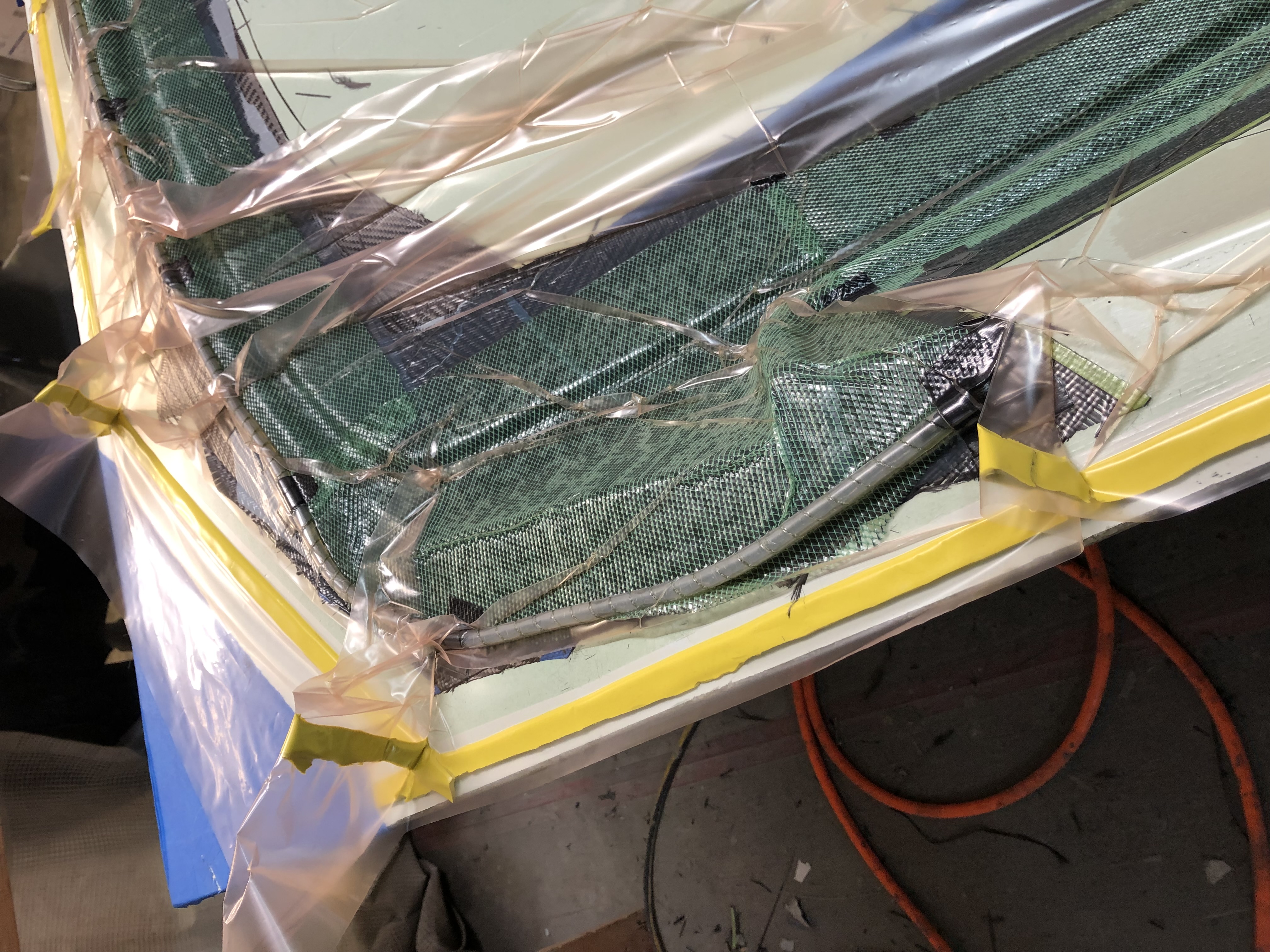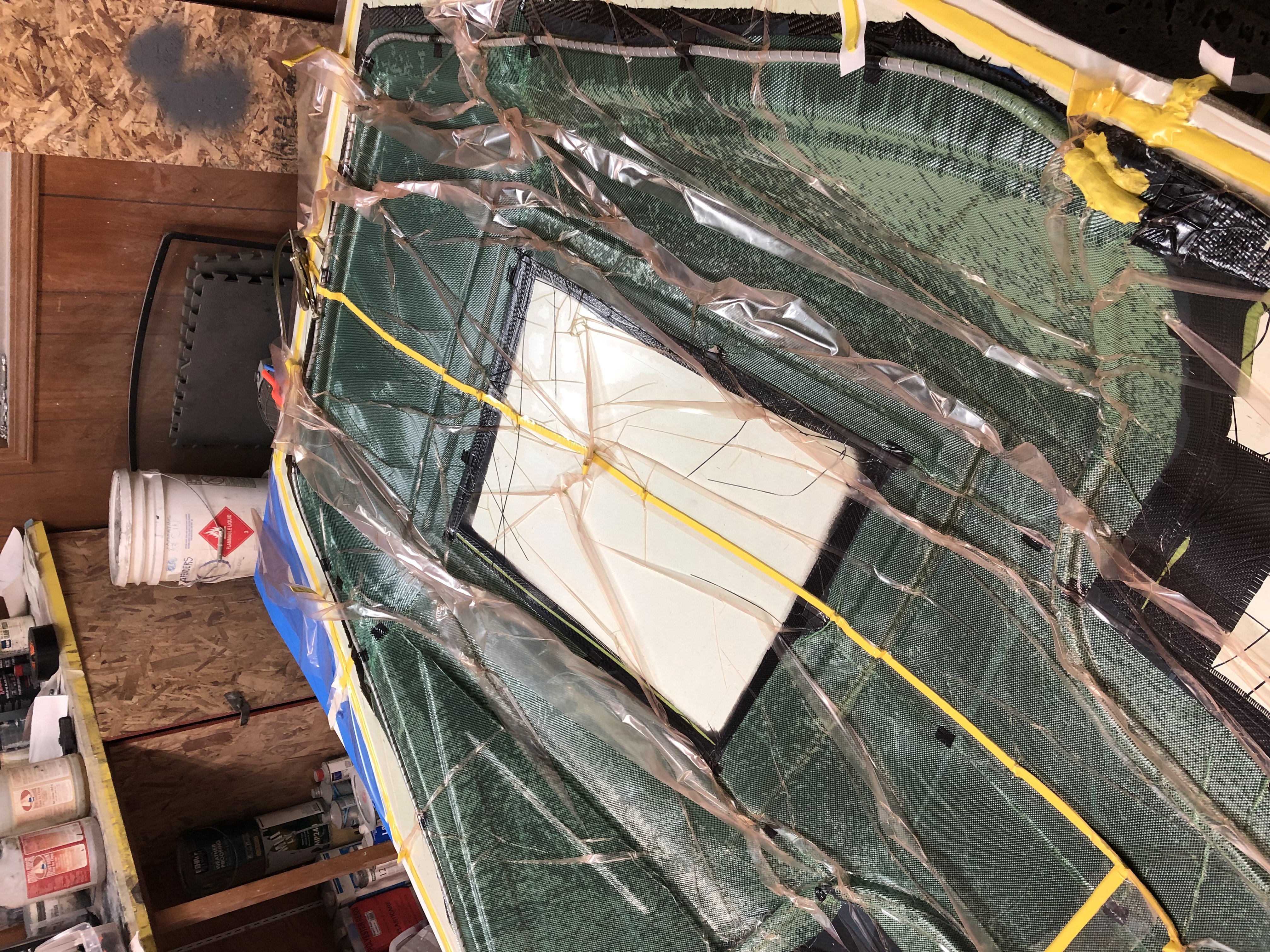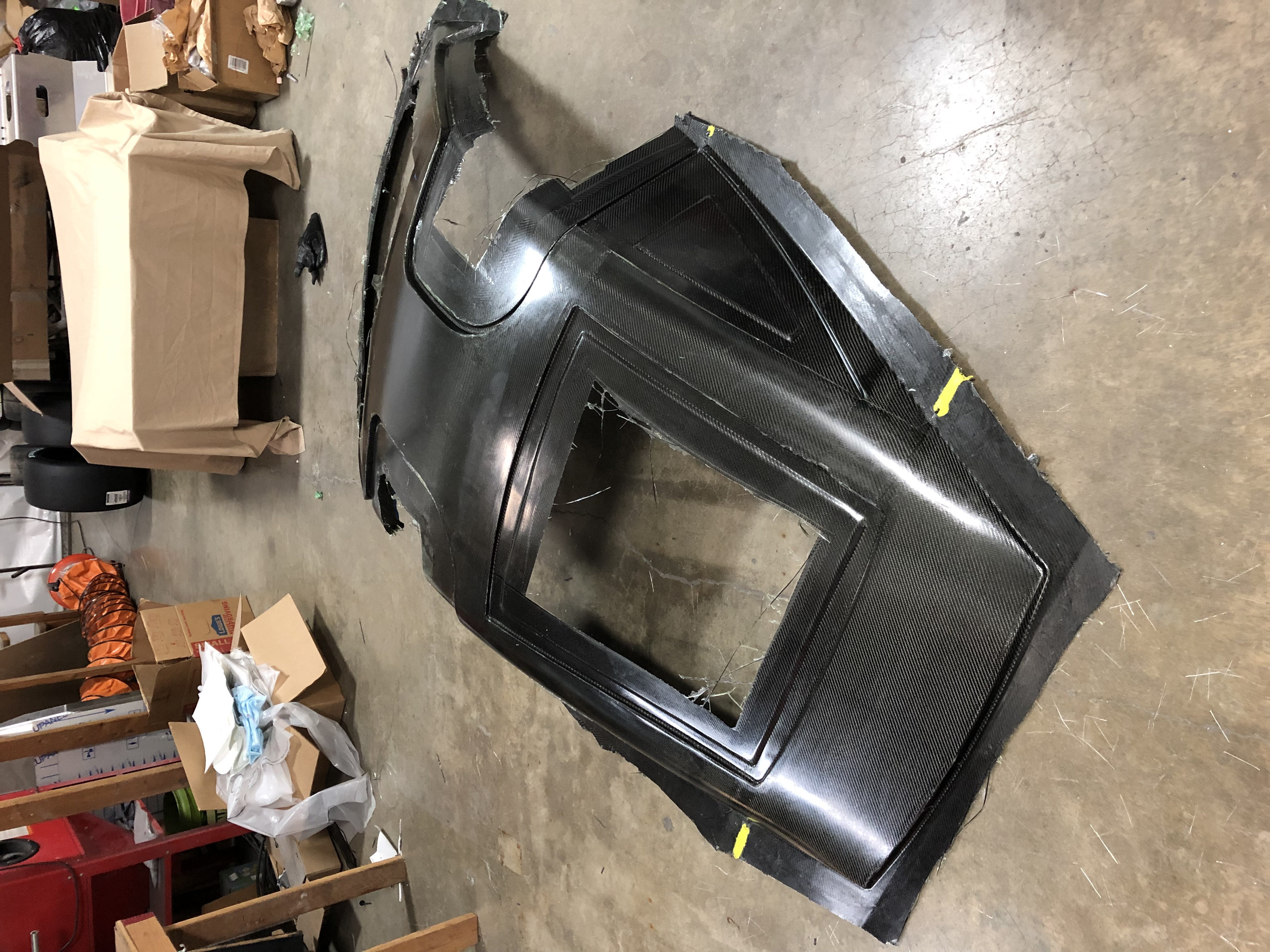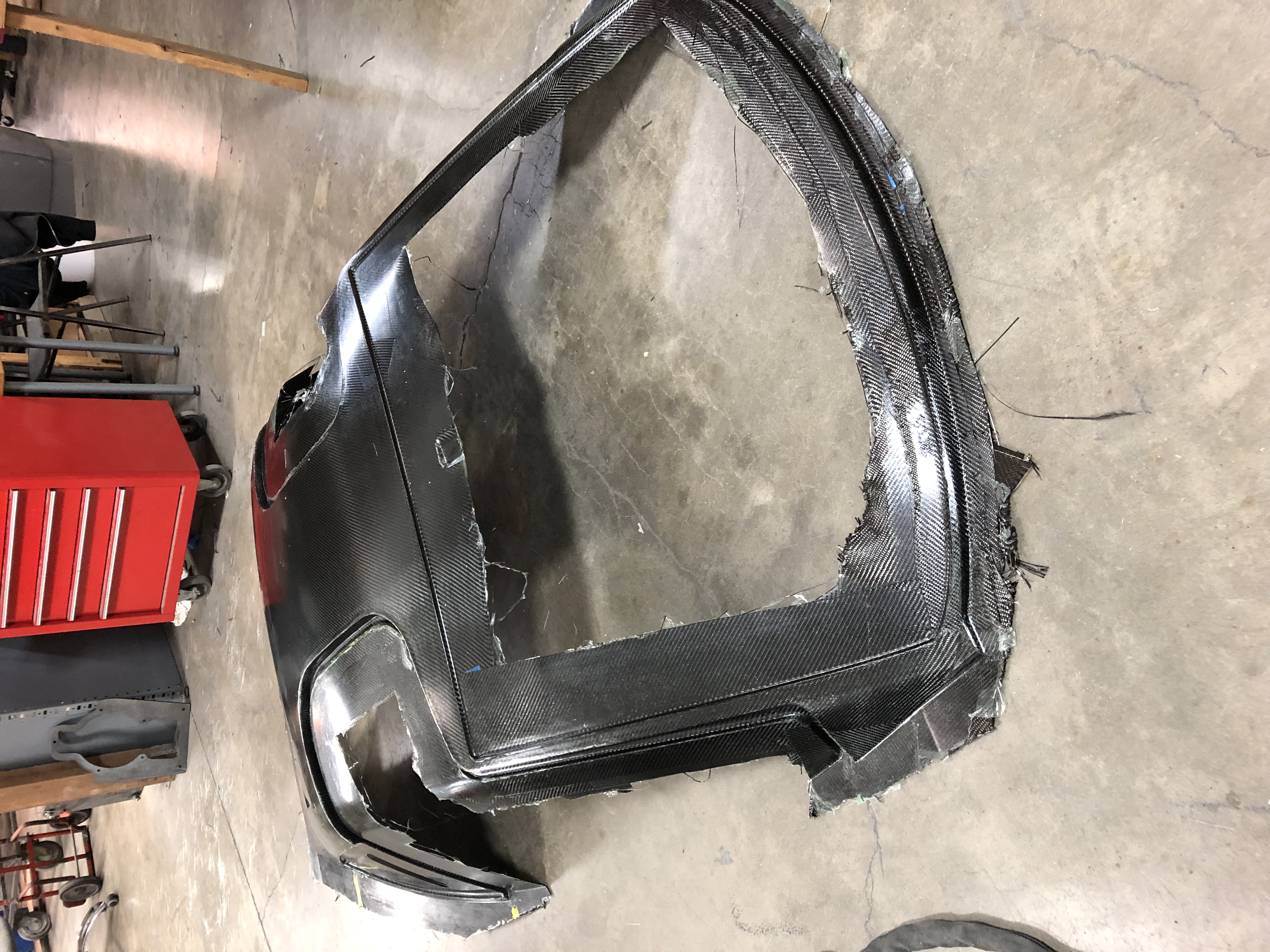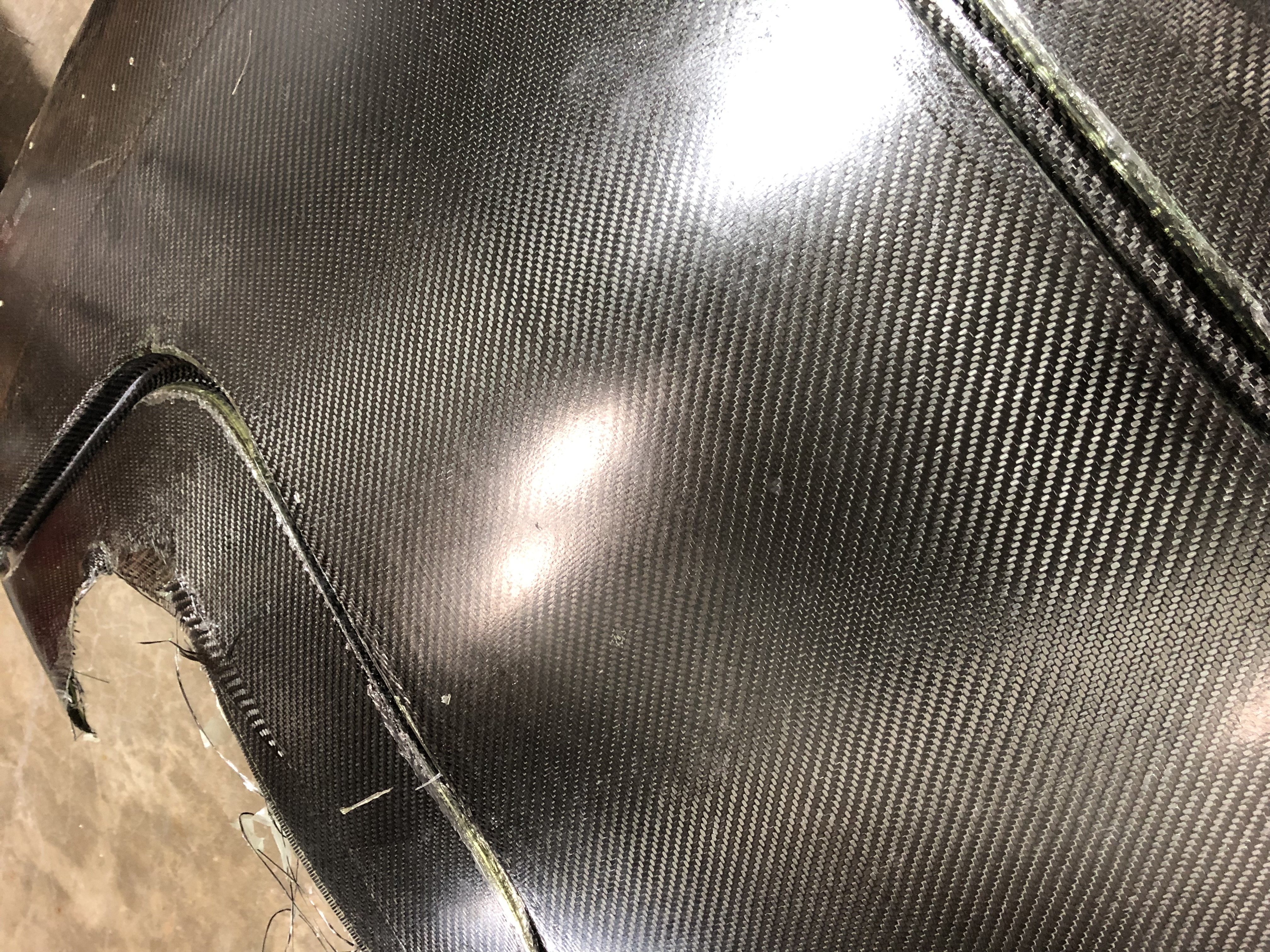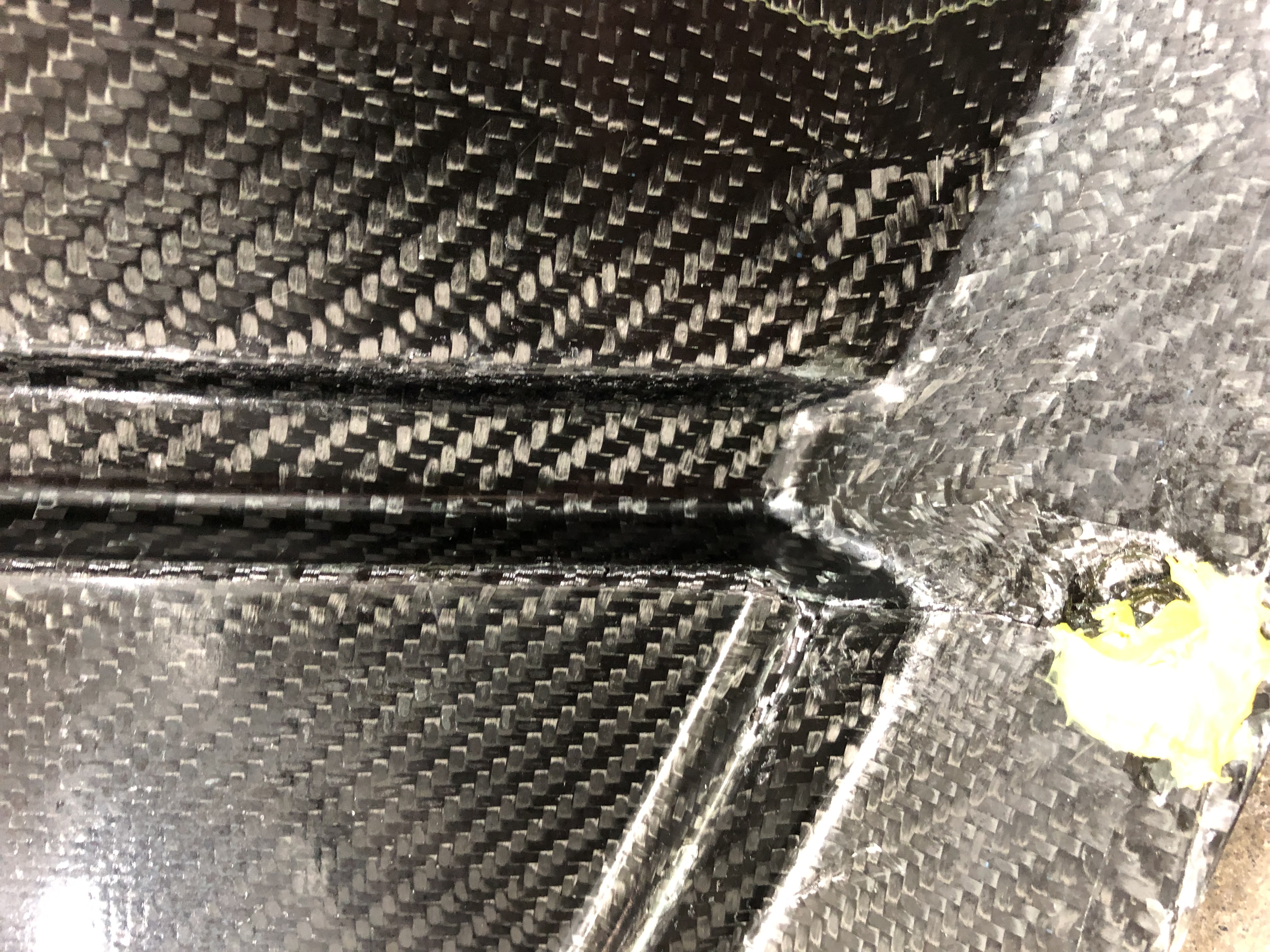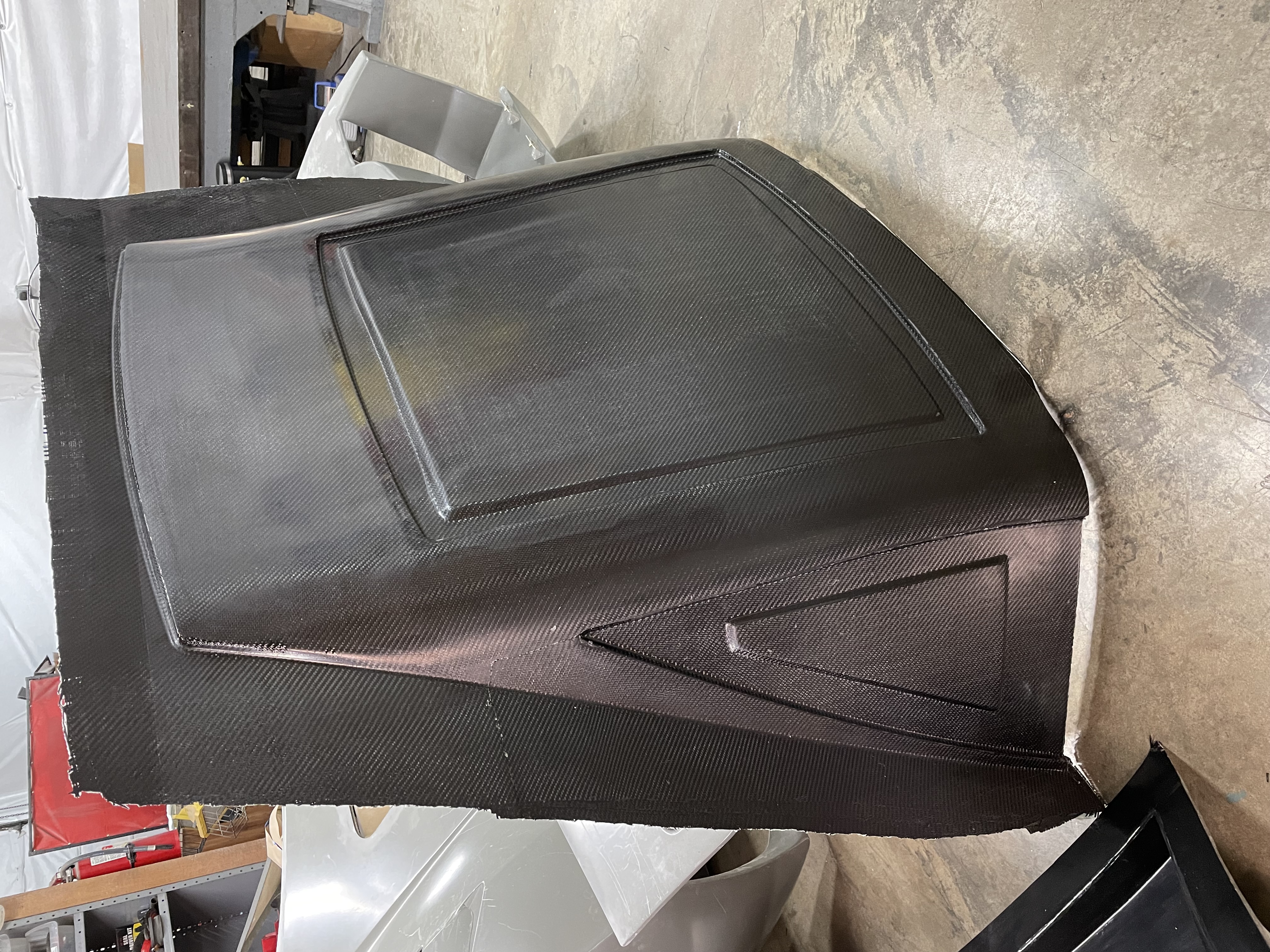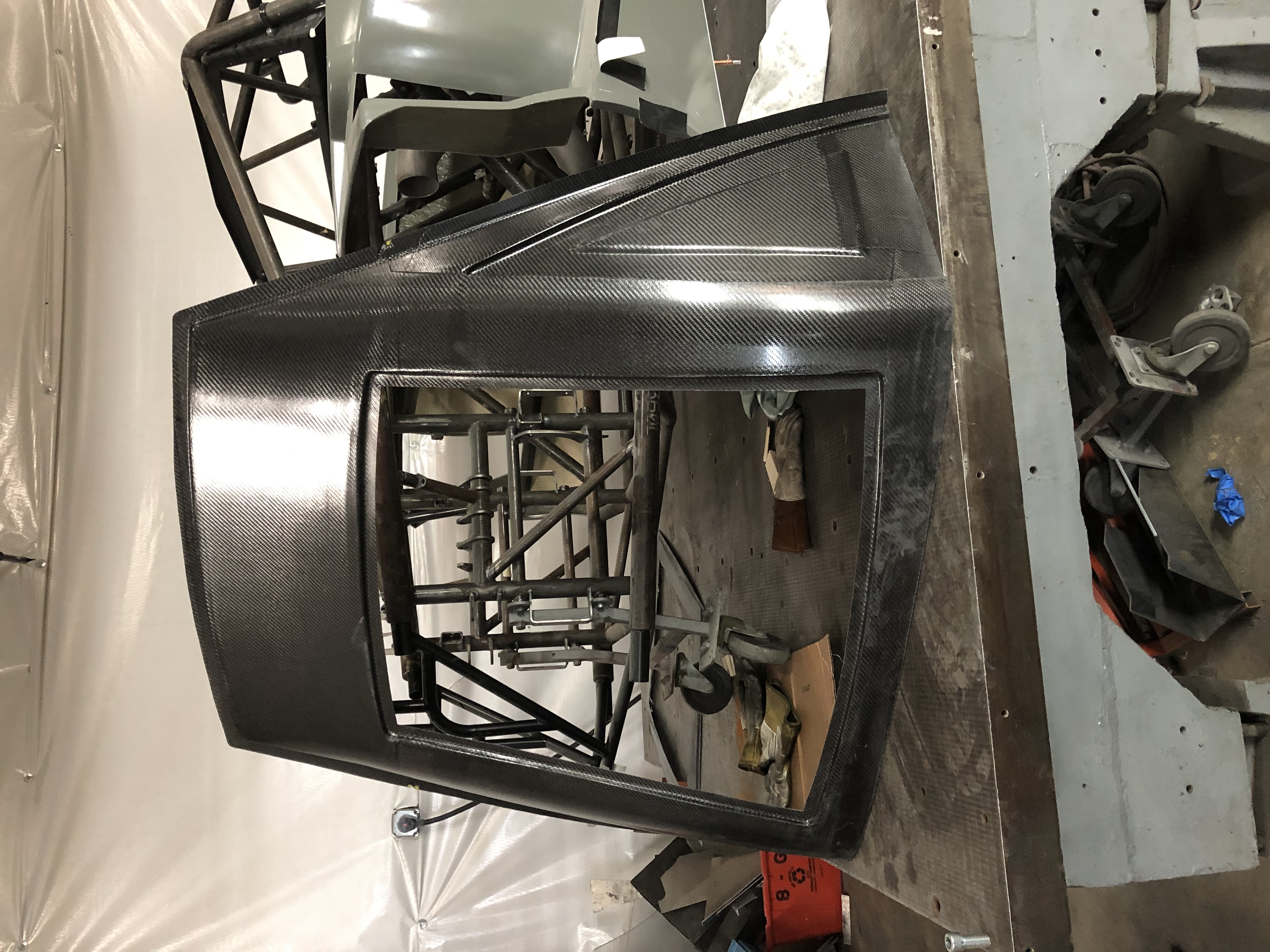In order to make a carbon fiber part, the proper tooling must be available. For this part, I am using the company's canopy mold. Making the tooling can be a very time consuming and expensive process, so it is imperative that the mold is prepared properly to reduce the chance of damage to the tool. For this mold, it has been prepared with an appropriate release agent that allows the finished part to be removed.
STEP 1: The carbon fiber fabric must be laid up in the mold. This will be visual carbon fiber, so care must be taken to prevent warping the weave when laying up the first layer.
STEP 2: Once all the layers of carbon fiber fabric are laid up, the supporting materials are added. These include peel ply, flow media, and both vacuum and infusion lines.
STEP 3: Finally, the bag is added to the mold, sealing everything inside an air-tight system.
STEP 4: The part is infused with resin, pulled in through the infusion line. You can see pleats in the bag, which are necessary to allow the bag to reach all areas of the part.
STEP 5: Carefully remove the part from the mold. If the mold has been prepared properly, it should come out somewhat easily. The finish on the part directly relates to the quality of the tool, any imperfection on the tool will transfer to the part. The shine on this part makes me very happy.
For parts with complex geometry, the standard 2x2 twill weave (what most people envision when they think of a carbon fiber part) is an excellent choice. It has a fantastic bias stretch that can allow it to conform to most shapes, as shown by how it works around the rain gutter feature of the canopy.

